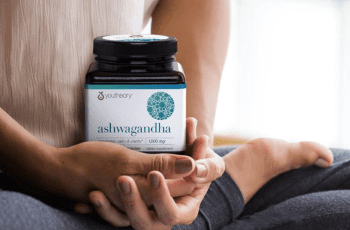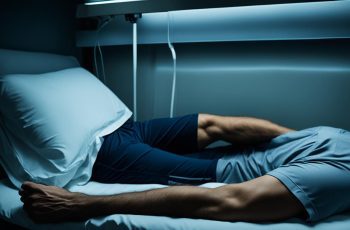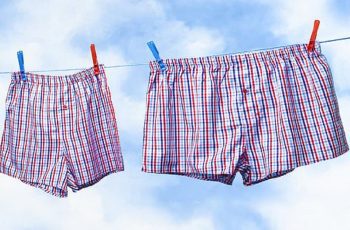Heel Touches Exercise
For the rectus abdominis and obliques, do alternating heel taps, also known as heel touches (abs). This muscle can also be activated throughout the move if done correctly.
Stabilizing your spine and maintaining a healthy, strong lower back requires working on your inner abdominal muscles (internal obliques and transverse abdominis). In order to perform a variety of exercises, such as heel touches, you will need this. If you’re looking to burn a lot of calories, this isn’t the best exercise for you to do. With the addition of cardio-based abdominal exercises, your workout will become more challenging.
If you want to isolate the abdominal and oblique muscles, this exercise is a great option.
WHAT ARE HEEL TOUCHES?
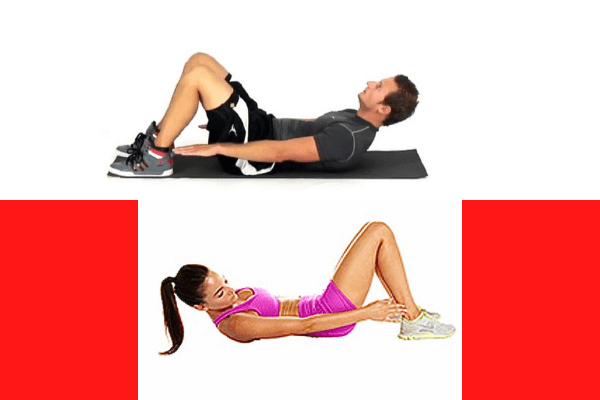
In an oblique-targeted exercise, heel touches can be used in a variety of ways. This exercise, which is suitable for people of all fitness levels, can help you lose weight and build a stronger core. This exercise can be done with or without resistance, depending on your level of fitness. The muscles in your oblique region will contract as you squeeze each heel in turn. You’re essentially strengthening your entire core with each rep. As we get older, it becomes more important to maintain our balance and stability. Including heel touches in your abdominal workout will help you achieve this goal.
WHAT MUSCLES DO HEEL TOUCHES WORK?
The obliques are worked on both the front and the side with heel touches (internal and external). This exercise uses the transverse abdominal muscles (TVA) to lift the head and shoulders off the floor. During this exercise, the rectus abdominis (also referred to as the “6 pack” muscles) remain statically contracted. The improved range of motion in your hip flexors is another benefit of heel touches.
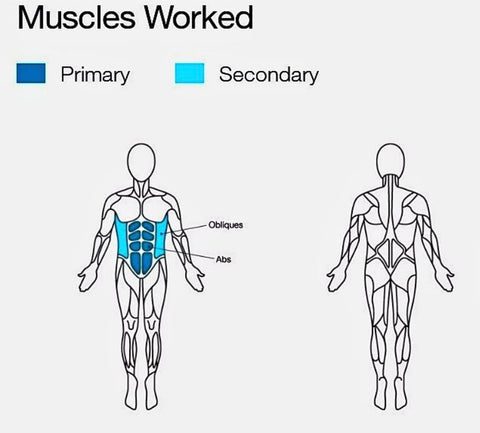
Here’s a brief breakdown of the muscles used:
Transverse Abdominis (TVA): There are two layers of muscles in the abdomen: the transverse abdominis and the rectus abdominis. These muscles aid in the support and stabilization of the spine as well as the positioning of internal organs. It’s nearly impossible to move any of your limbs at all without these fundamental muscles.
Rectus Abdominis: In the abdominal wall, the rectus abdominis is a long, frontal muscle. The “six-pack” is located in the middle of the core or trunk and is often referred to as such. These muscles will not be visible if they are covered by a thick layer of fat. They begin and end at the base of the sternum and continue down to the pubic bone. Frontal flexion toward the pelvis is the primary role of the rectus abdominis. Static holds, such as those demonstrated during heel touches, as well as movements like sit-ups or rocking crunches may come to mind.
Internal Obliques: Right above the transverse abdominis, on the lateral side of the rectus abdominis, is this muscle. It’s a thin layer that’s part of the abdominal wall’s structure. It is possible for the internal obliques to perform bilaterally, which means simultaneously. Performing a hollow hold is one example of this. Additionally, it aids in a wide variety of other movements by allowing the torso to bend and flex. When elongating the trunk, the internal and external obliques are also engaged, despite the fact that we tend to focus solely on their contraction. A backbend stretch is a good example of this.
External Obliques: In comparison to the internal obliques, the rectus abdominis is a much larger muscle, and it is also located on the lateral side of the abdominal wall. It covers a large area, extending from the lower ribs all the way to the pelvis. You can’t turn your torso in any direction without the help of these muscles. Working together, external and internal obliques are essential. When the torso twists to the left during a Russian twist, the left side internal oblique and right side external oblique contract at the same time!
Hip Flexors: Hip flexors are a group of muscles that assist in bringing your legs and trunk together in a number of ways. Your hip flexors open the door to bringing your legs together, whether you bend your knees to do so or your waist to do so.
HOW TO DO HEEL TOUCHES CORRECTLY
The importance of proper technique cannot be overstated. You want to get the most out of your time and effort. We want you to be able to perform this exercise correctly and confidently, whether you’re in the gym or at home.
1. Place your feet apart and face each other on the floor as you begin. Your knees should be bent at a 90-degree angle. With your fingers pointing downward, your arms should be at your side.
2. Lift your head so that your torso comes closer to your head. The goal is to bring your belly button closer to the center of your spine. Make sure you don’t tuck your chin in; your neck should be in a neutral position, your eyes aimed at the ceiling. Swiveling or bending to the side, begin reaching your heels with one hand at a time.
3. Continue to squeeze your oblique muscles with each heel touch. Exhale through your mouth after each tap.
4. Slow and controlled repetitions are recommended. Repetition can be increased in time or quantity by performing 3 to 4 sets. Do 12-15 reps on each side to begin.
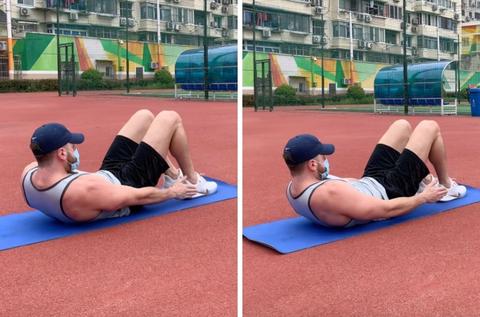
Keep a close eye on your body and pay attention. Stop exercising if you begin to experience severe pain or discomfort. Consult with your doctor if necessary.
COMMON MISTAKES WITH THE ALTERNATING HEEL TOUCH EXERCISE
You won’t get a proper contraction if you don’t squeeze your abdominal muscles properly during this exercise. The ultimate goal of this exercise is to get your obliques firing all the way through.
Make sure you don’t put unnecessary strain on your neck by tucking your chin down during this exercise’s static hold of the rectus abdominis. Take a break and start over with your c-spine (neck) in a more neutral position.
Improper breathing is another common error. When you inhale and exhale, you’re supplying oxygen to your abdominal muscles, which is critical during any ab exercise. In addition, this will provide you with the energy you need to complete your workout to the end.
HOW MANY SETS & REPS SHOULD I DO FOR HEEL TAPS
For a variety of reasons, no two people will begin exercising at the same level of fitness. If you want to push yourself further, you need to figure out what works best for you and make adjustments as you go. Be confident in your own approach, and be aware of your physical limitations. Avoid injuring yourself or setting an unrealistic goal that will make you feel discouraged.
Start with 10-12 reps on each side for beginners. Try increasing the number of repetitions to 12-15 on each side as you progress. Start with 15-20 reps per side if you’re an advanced lifter.
HOW TO INCREASE DIFFICULTY OF HEEL TOUCHES
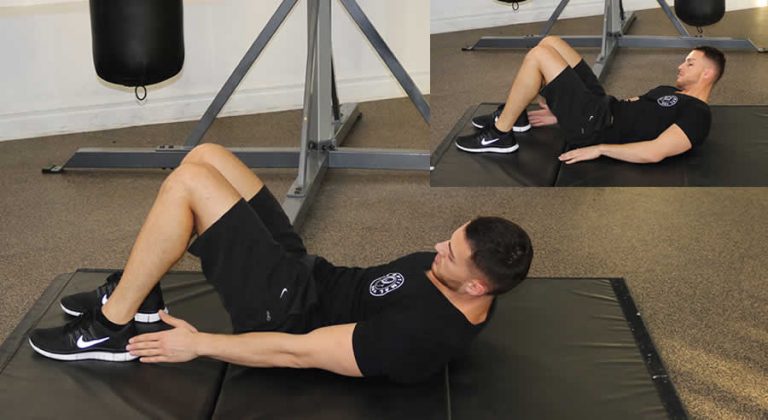
The difficulty of heel touches can be increased in a number of ways. To get the extra burn you’re looking for, you’ll need to get creative with these implementations of bodyweight exercises. Increasing the difficulty of your workouts may also help you achieve your muscle-building goals more quickly. The following are some ideas:
- Reduce the number of repetitions you’re doing. Maintain a two-second pause between each repetition.
- Adding light to moderate weight, such as dumbbells or a resistance band wrapped around your back and looped in each hand, will increase the difficulty of the exercise.
- To increase the number of repetitions you can do, either move your feet farther away from your body or closer together.
- A more advanced addition is a decline bench, which will test your ability to reach the heel with each heel touch you perform.
Finally, for an extended period of time, add a bonus set or burn out as a finisher.
9 BEST HEEL TOUCH ALTERNATIVES
Maintaining a variety in your ab workout is essential. To work your obliques and rectus abdominis in a different way than heel touches, try these exercises.
Plank Spiders: Strike the elbows one at a time while in an extended plank position. Controlled repetition at a brisk pace. Exhale with each knee drive to keep your spine flat throughout the exercise. Do 10-12 reps on each side for a total of 20-24 total reps for three sets.
Side Planks: Prop yourself up on your elbow while lying on your side. Place the other arm at your side. Keep your legs straight as you raise your hips off the floor. Hold this position for 10 to 20 seconds while squeezing your abdominals. Repeat 2-3 times on each side before switching. It’s important to maintain a steady breathing pattern throughout the hold.
Elbow to Knee Bicycle Crunch: In a fetal position, bend your knees to a 90-degree angle. Raise your chin and shoulders off the floor, and then place your fingers behind the back of your head without pulling your chin up. Alternate elbows to knees by rotating the torso while using your legs in a bicycling motion. If possible, try to bring your knees in towards your chest before extending them again. 3 rounds of 12-15 reps on each side, or 24-30 total, are recommended.
Reverse Crunch Toe Tap: To begin, lie on your back with your lower back pressed firmly into the floor. This is the starting position. Lay down flat with knees bent at a 90-degree angle. Lift your feet off the ground by curling your pelvis upward and engaging your lower abdominals. Bring your knees to your chest and then tap the floor with your toes while extending your legs back to 90 degrees. Aim for 12-15 repetitions per round for three sets.
Hanging “X” Crunch: The knees should be alternating as if they were drawing an upside-down “X” while hanging from a sturdy bar. A different way to visualize this would be to raise each knee one at a time in a criss-cross fashion. If getting up and down is difficult, have a sturdy box or step handy. For three rounds, aim for 8-10 reps on each side, or 16-20 total.
Russian Twists: Sit upright on the floor with your legs bent at a 45-degree angle and your spine straight. Approximately 15 to 20 degrees of torso flexion is required. Your rectus abdominis will be engaged as a result of this exercise. Twist your torso with your fingers interlocked as you lift your feet off the floor. Aim for each side of your hips with your hands. A dumbbell, kettlebell, or medicine ball can be used to make the workout more difficult. You can modify this exercise by keeping the soles of your feet on the ground and your toes pointed upward. You should aim for a total of 24-30 reps over the course of three rounds.
Hollow Hold: Lift your arms above your head while laying on your back with your legs straight. Lift your head and shoulders off the floor by pressing your lumbar spine into the floor. Lift your legs off the ground by squeezing your abdominals into the pelvis. If you find it difficult to keep your hands in the air while doing this exercise, you can bring your arms down to your sides. During this isometric hold, keep your neck neutral and breathe continuously through your nose and out of your mouth. Hold the position for 20-30 seconds to see if you can get the desired results. Three or more times, take a break.
Leg Downs: The first step is to lie on the ground with your body in a straight line. Maintain a downward pressure on your lower back. Start by lowering one leg at a time, then the other, until your leg is about 1-2 inches from the floor. Alternate. This exercise can be modified by placing your hands under your tailbone. The same rule applies: keep your lower back pressed against a hard surface. The spine benefits from this by being stabilized. For the first three rounds, perform 10-12 repetitions on each side, or 20-24 total.
Rocking abdominal crunch: Lay flat on your back with your legs bent at a 90-degree angle. Do not let your heels touch the ground. Extend your arms straight out in front of you, facing your knees, and raise your torso and shoulders off the floor. Then, in a rocking chair motion, slowly return to the starting position. Maintain a neutral neck position with your eyes aimed at the ceiling during this exercise. Do 3 rounds of 15-20 reps.
FINAL NOTE
Heel touches are an excellent way to build core strength and define your internal and external obliques. Starting with 2-3 times a week is a great place to begin. Be sure to keep your diet as clean as possible so that you get the best results possible.
Always check with your primary care physician before beginning an exercise regimen if you’ve had an injury that’s still bothering you or if you have an existing medical condition.
Frequently Asked Questions (FAQs)
What are heel touches good for?
Most of the major muscles in your core are activated by heel touches, including the rectus abdominis (also known as the six-pack muscle), transverse abdominis, and upper and lower abs .
Do heel touches slim your waist?
In addition to helping you cinch your waist and achieve the ideal hourglass form, the heel touches also aid to tighten your entire side ab wall.
What type of exercise is heel touches?
Simply put, heel touches are an oblique and ab-focused calisthenics exercise. Heel touches are a variant on the traditional crunch exercise in which you lie down and tense your stomach muscles as you extend your hands to touch your heels one at a time.
Does twisting help abs?
Many individuals enjoy using twist boards, which are at-home fitness equipment. They help improve balance, muscle tone, and abdominal strength. You can get an aerobic workout by twisting on a twist board, which could aid in calorie and fat loss.


